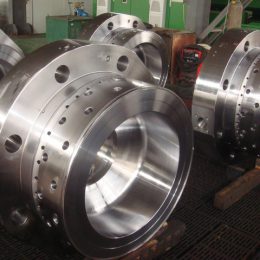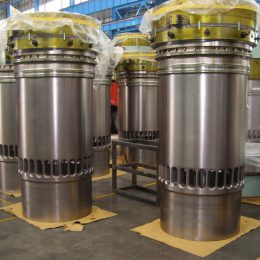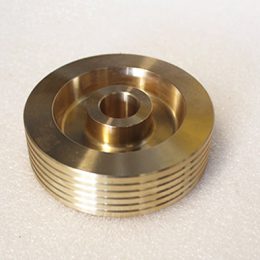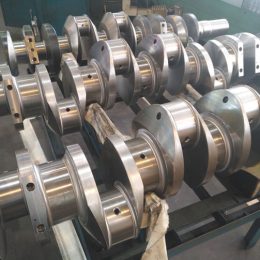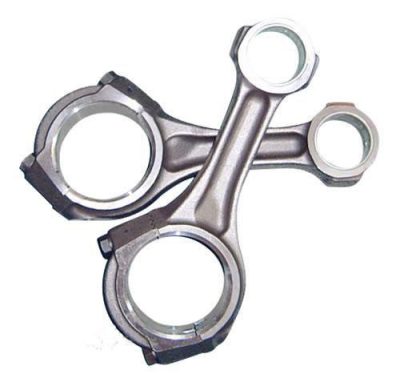
Diesel Engine Connecting Rods
Diesel Engine Connecting Rods are component of an engine that connects the piston to the crankshaft. It plays a vital role in the engine’s operation, as it converts the reciprocating motion of the piston into the rotational motion of the crankshaft. The connecting rod consists of two ends, one connected to the piston and the other to the crankshaft.
| SULZER | MAN B&W |
| RND68/76/90 | L45/55/67/80/90GF/GB |
| RND68/76/90M | L35/42/50/60/70/80MC |
| RLB(A)56/66/76/90 | S35/42/46/50/60/70/80MC/MC-C |
| RT38/48/52/58/62/68/72/76/84 | KSZ52/105, 70/120, 70/125, 70/150, 90/190 |
As you can see, Decho Marine offers a wide range of connecting rods to fit different engine types and sizes. Each type has its own unique specifications, including length and diameter measurements, which are crucial for proper engine performance.
Technical Parameters of Marine Diesel Engine Connecting Rods: In addition to the measurements listed above, there are several technical parameters to consider when selecting a marine diesel engine connecting rod. These include the maximum tensile and compressive strength, as well as the fatigue limit and elongation.
| Product | Supplier | Technical Parameters |
|---|---|---|
| DK-20 Connecting Rod | Decho | Length: 143mm, Big end diameter: 52mm, Small end diameter: 22mm |
| DK-26 Connecting Rod | Length: 154mm, Big end diameter: 52mm, Small end diameter: 22mm | |
| DK-28 Connecting Rod | Length: 172mm, Big end diameter: 52mm, Small end diameter: 22mm | |
| DC-17 Connecting Rod | Length: 135mm, Big end diameter: 50mm, Small end diameter: 22mm | |
| DE18 Connecting Rod | Length: 157mm, Big end diameter: 50mm, Small end diameter: 22mm | |
| ADC320 Connecting Rod | Length: 155.5mm, Big end diameter: 54mm, Small end diameter: 22mm | |
| L21/31 Connecting Rod | Length: 197.6mm, Big end diameter: 95mm, Small end diameter: 44mm | |
| L23/30 Connecting Rod | Length: 225mm, Big end diameter: 98mm, Small end diameter: 42mm | |
| L23/30DF Connecting Rod | Length: 219mm, Big end diameter: 98mm, Small end diameter: 42mm | |
| L27/38 Connecting Rod | Length: 270mm, Big end diameter: 128mm, Small end diameter: 70mm |
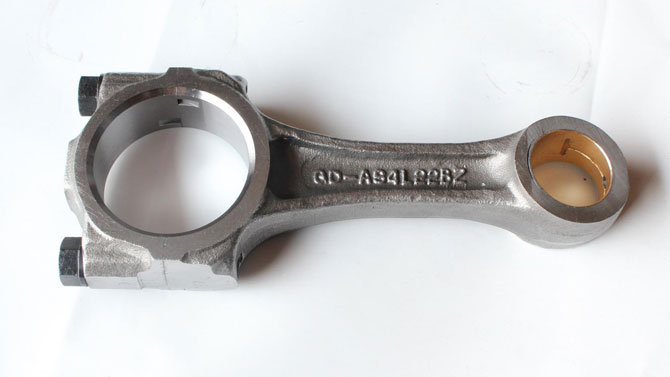
Function of Connecting Rods in Diesel Engines
The function of the connecting rod in a diesel engine is to transmit the force from the piston to the crankshaft. The connecting rod converts the reciprocating motion of the piston into the rotational motion of the crankshaft. It also maintains the proper alignment between the piston and the crankshaft. Connecting rods must be strong and durable to withstand the high forces and stresses in a diesel engine.
Types of Connecting Rods
There are different types of connecting rods used in diesel engines, depending on the engine’s application and design. The two main types of connecting rods are I-beam and H-beam.
I-Beam Connecting Rods
I-beam connecting rods are the most common type of connecting rods used in diesel engines. They are called I-beam due to their shape, which resembles the letter “I.” I-beam connecting rods are lightweight and provide good strength, making them suitable for most diesel engine applications.
H-Beam Connecting Rods
H-beam connecting rods are another type of connecting rod used in diesel engines. They are called H-beam due to their shape, which resembles the letter “H.” H-beam connecting rods are stronger than I-beam connecting rods and are suitable for high-performance diesel engines.
Materials Used in Connecting Rods
Connecting rods are typically made from steel, aluminum, or titanium. Steel is the most common material used in connecting rods due to its strength and durability. Aluminum and titanium are also used in connecting rods, mainly in high-performance diesel engines, as they are lighter and stronger than steel.
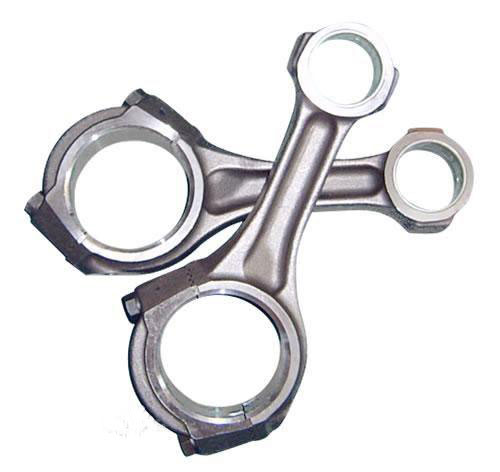
Forged vs. Cast Connecting Rods
There are two main methods used to manufacture connecting rods: forging and casting.
Forged Connecting Rods
Forged connecting rods are made by heating a billet of steel and then forging it into the desired shape using a press or a hammer. Forged connecting rods are stronger and more durable than cast connecting rods, making them suitable for high-performance diesel engines.
Cast Connecting Rods
Cast connecting rods are made by pouring molten metal into a mold and letting it cool and solidify. Cast connecting rods are less expensive to
Cast Connecting Rods (continued)
produce than forged connecting rods and are suitable for most diesel engine applications. However, cast connecting rods are weaker and less durable than forged connecting rods, making them less suitable for high-performance diesel engines.
Performance Connecting Rods
Performance connecting rods are designed for high-performance diesel engines that generate more power and torque than standard diesel engines. Performance connecting rods are typically made from stronger materials and are designed to handle higher forces and stresses. They may also be designed with different shapes and dimensions to optimize the engine’s performance.
Connecting Rod Bearing
The connecting rod bearing is a component that allows the connecting rod to pivot on the crankshaft. The bearing is typically made from a softer metal than the crankshaft to prevent excessive wear and damage to the crankshaft. Connecting rod bearings must be properly lubricated to prevent damage and ensure smooth operation.
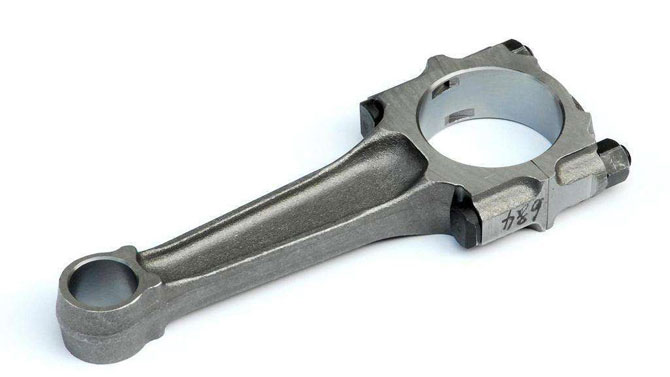
Connecting Rod Length and Stroke
The length and stroke of the connecting rod are important factors that affect the engine’s performance. The length of the connecting rod affects the engine’s compression ratio and the engine’s ability to rev high. The stroke of the connecting rod affects the engine’s displacement and torque output. The optimal length and stroke of the connecting rod depend on the engine’s design and application.
Connecting Rods Balancing
Connecting rod balancing is the process of ensuring that the weight of each connecting rod is the same. Balancing is important to prevent vibrations and ensure smooth operation. Unbalanced connecting rods can cause excessive wear and damage to the engine’s components.
Connecting Rod Maintenance and Replacement
Connecting rods are durable components that can last for the life of the engine with proper maintenance. Regular oil changes and proper lubrication are essential to prevent damage to the connecting rods and other engine components. If a connecting rod becomes worn or damaged, it may need to be replaced to prevent further damage to the engine.
Signs of a Worn Connecting Rod
There are several signs that a connecting rod may be worn or damaged. These include:
- Knocking or banging noises coming from the engine
- Reduced engine power and performance
- Excessive oil consumption
- Metal shavings in the oil
If any of these signs are present, it is important to have the engine inspected by a qualified mechanic to prevent further damage.
https://en.wikipedia.org/wiki/Connecting_rod
This is the main Wikipedia page for connecting rods, which includes a section specifically about connecting rods in diesel engines.
